-
Deleting Pulse Elasticsearch indices
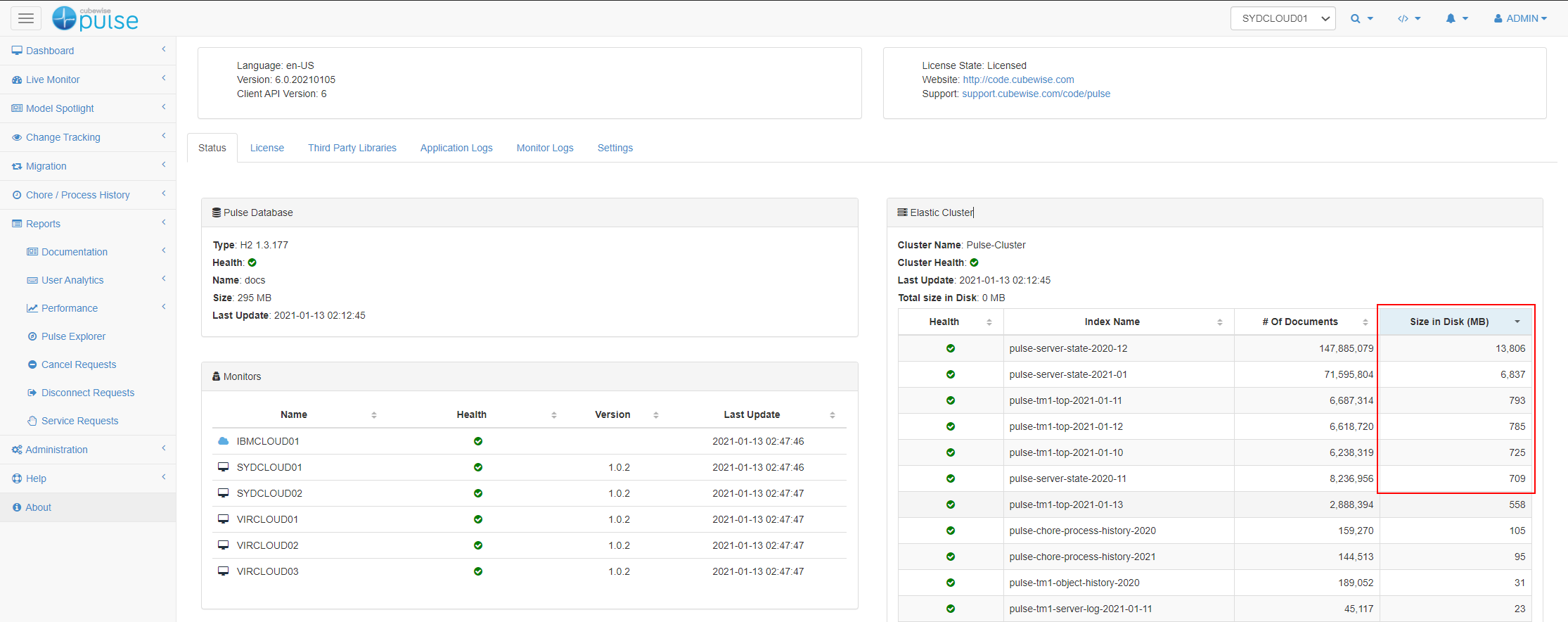
The size of the Elastic Cluster can be found in the Pulse About page:
-
Migrating Pulse v5.x history into Pulse v6.x
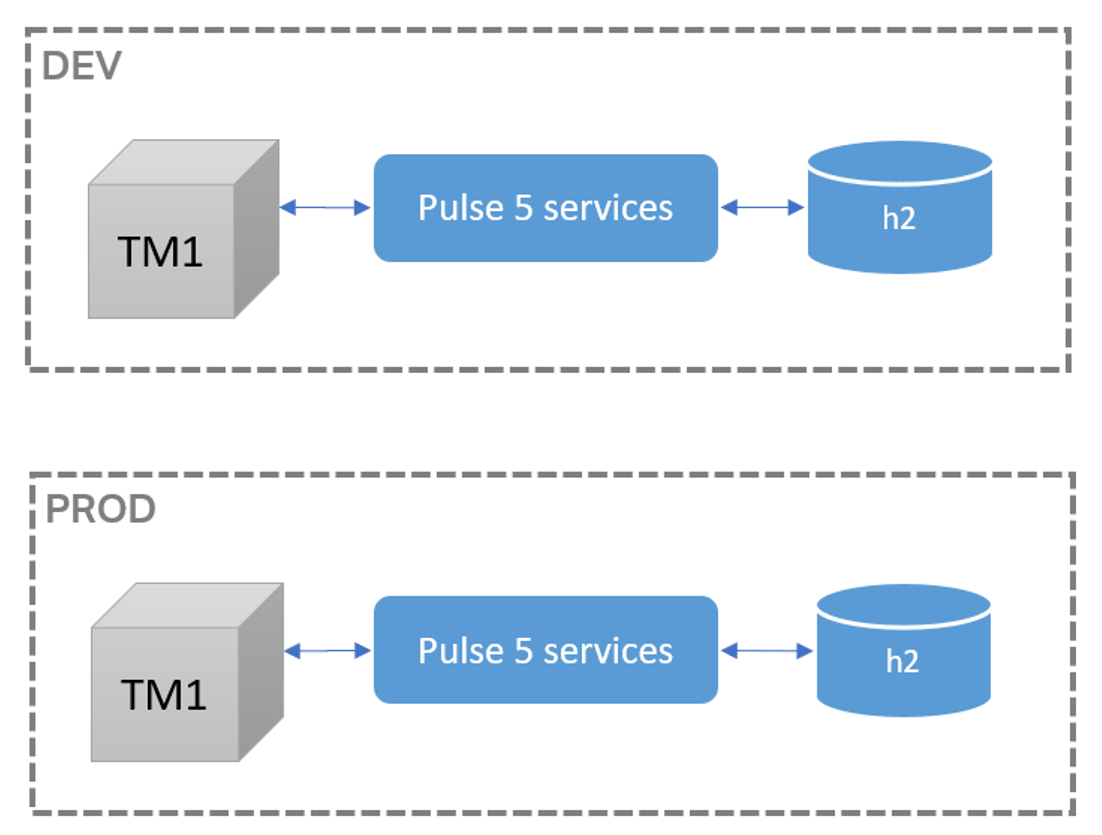
This article explains the steps to migrate Pulse 5 data from one server to a new server where Pulse 6 is installed.
-
Enable TM1 Web Logging to Pulse v6.x
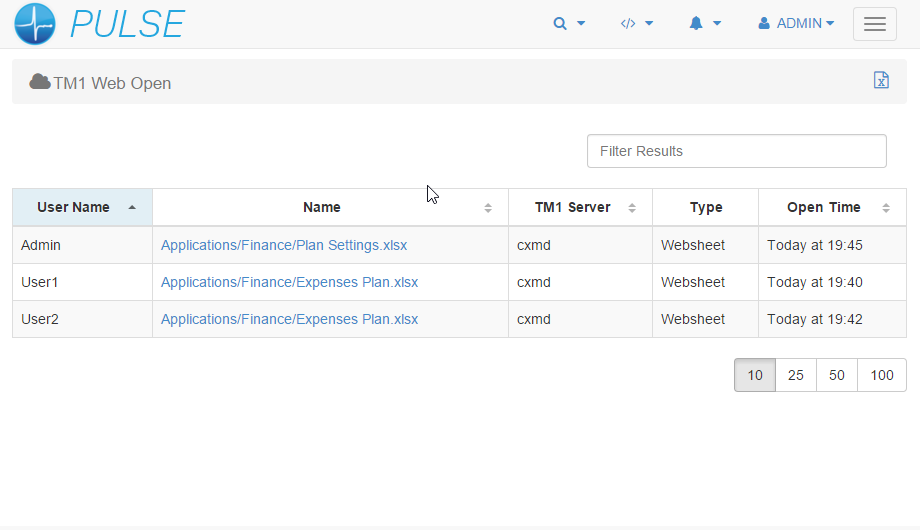
Pulse for TM1 allows you to track how TM1 Web is being used, each time a user moves between web sheets and cube views it is logged to the Pulse database. Quickly see the current open web sheets so you can determine what is causing long running queries or slowing the system.
-
Pulse Monitor Settings
The Pulse Monitor settings file can be found in the <pulse directory>confmonitor.yml file:
-
Connecting a Pulse Monitor
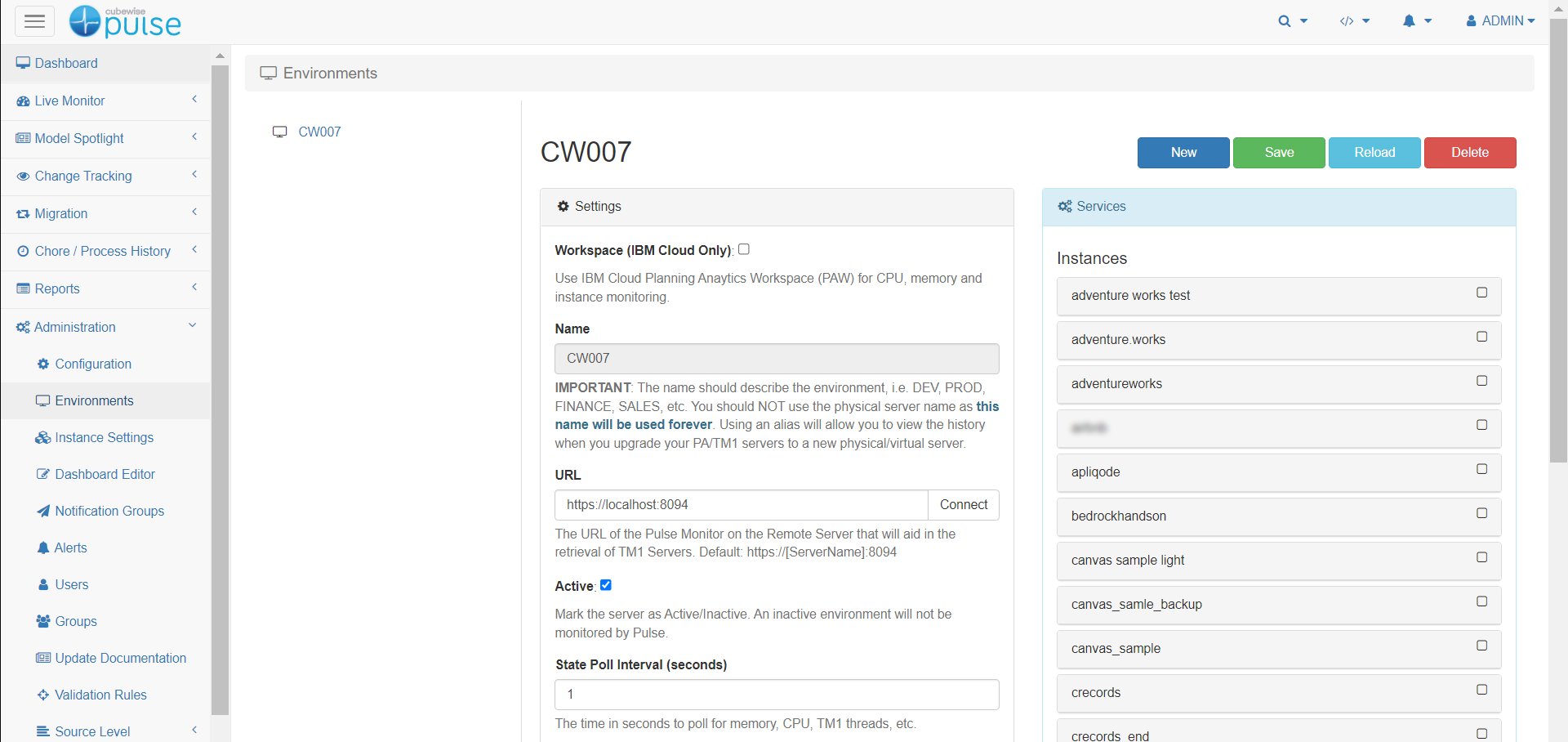
Once the Pulse Monitor has been installed on a separate server, the next step is to connect it to the main Pulse Application Server.
-
Connecting a TM1 instance
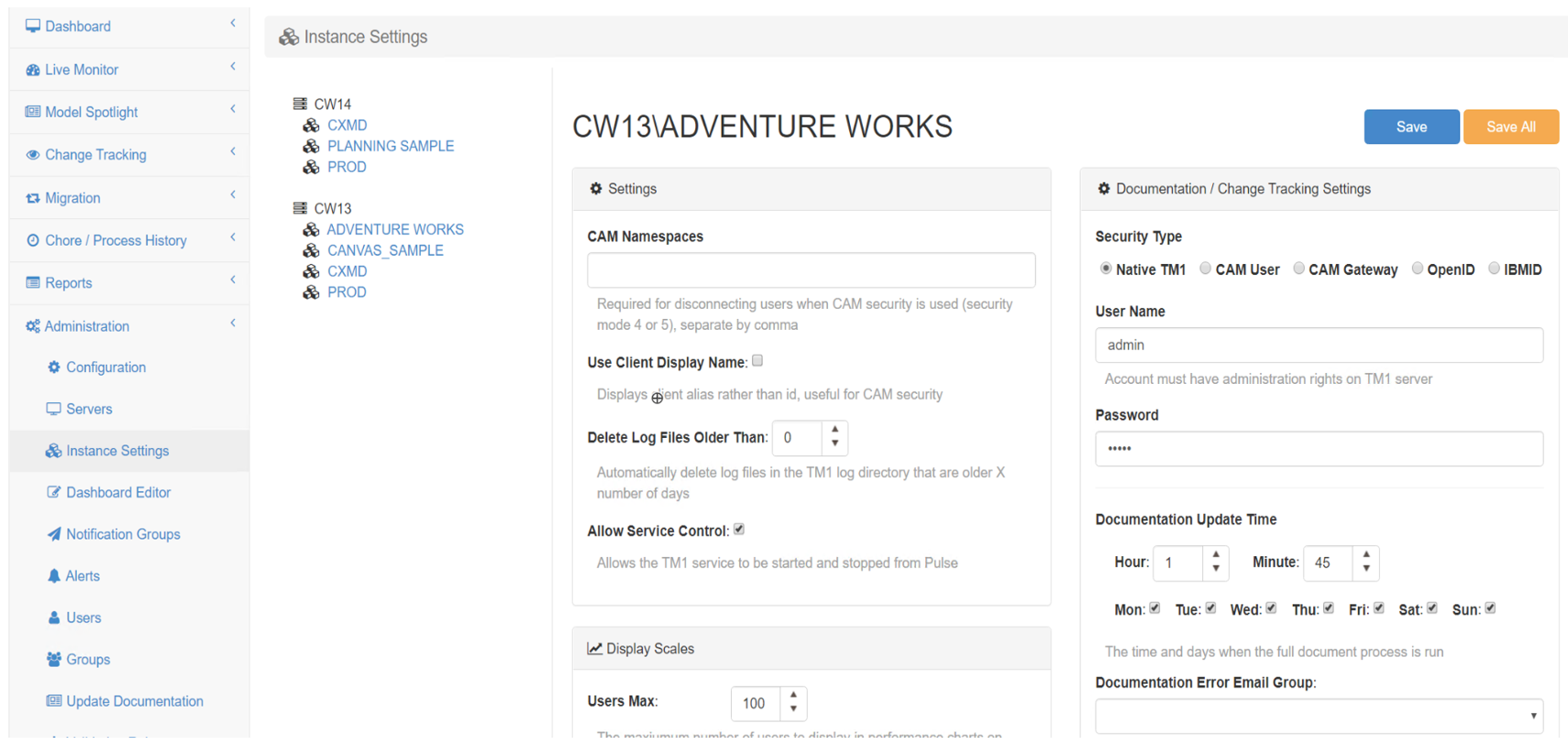
To connect to a TM1 instance with Pulse 6 or later, Pulse uses the TM1 REST API, you need to make sure first that the TM1 REST API is enabled for each instance and accessible from the Pulse server, more information here:
-
Setup Wizard (Pulse v6.x)

To get Pulse up and running you need to follow the steps of the Setup Wizard. Before you start the Setup Wizard you should have the following information ready:
-
Installing the Pulse Monitor on its own server
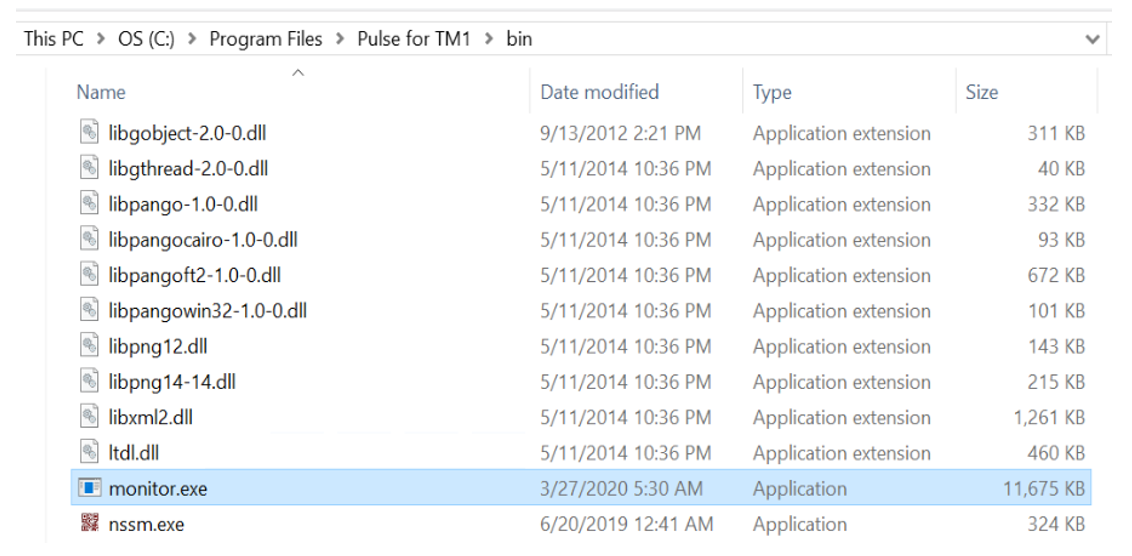
The Pulse Monitor needs to be installed on each TM1 server.
-
Understanding Pulse Elasticsearch data
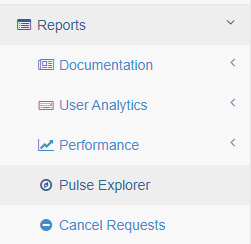
Starting with v6, the open-source version of Elasticsearch is embedded into Pulse. Elasticsearch is a search engine that helps Pulse store all the information about your TM1 application second by second.
-
Installing the Pulse Application Server

This article describes the steps to install the Pulse 6 Application Server.
